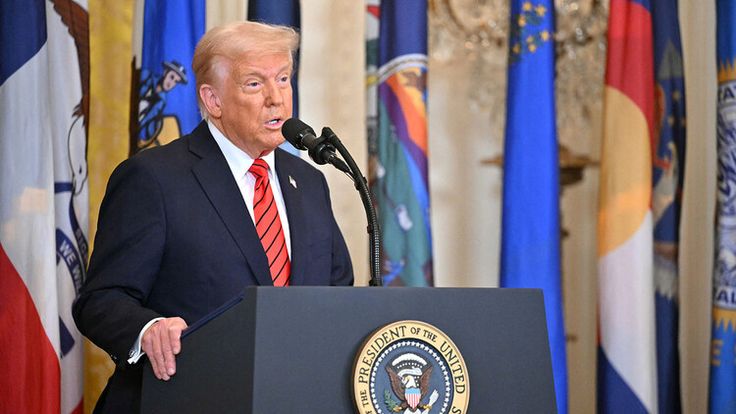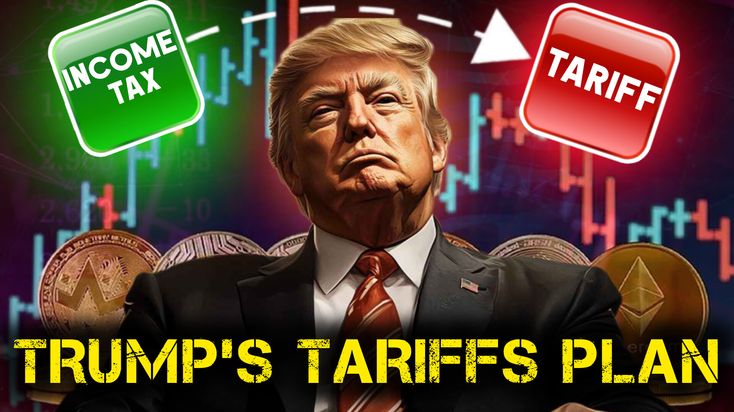In a fresh escalation of global trade tensions, former U.S. President Donald Trump has issued a bold warning: any nation aligning with the BRICS alliance will face a 10% import tariff, without exceptions. The announcement has triggered a fierce response from China, which labeled the move as reckless and a threat to global economic stability.
The post, made on Trump’s Truth Social platform, has quickly become a flashpoint in what many analysts are calling the beginning of a renewed Trump tariff news a conflict that could reshape global commerce.
Trump’s Warning: Align with BRICS, Face Tariffs

In his post, Trump wrote:
“Any country aligning with the anti-America policies of BRICS will be hit with an additional 10% tariff. There will be no exceptions. Thank you for your attention on this matter!”
This declaration comes on the heels of Trump’s broader import tax policy, which he unveiled earlier this year. That policy included a baseline 10% tariff on most imports into the United States, with some countries and trade blocs facing up to 50% in duties. While the policy was temporarily paused for 90 days to allow for bilateral negotiations, the clock is ticking, with the deadline set to expire on July 9, 2025.
China’s Reaction: “No Winners in Trade Wars”
China wasted no time in delivering a strong rebuke. During a regular press briefing, Foreign Ministry spokesperson Mao Ning warned that trade wars are a dead end.
“We have said it repeatedly there are no winners in a trade war. Protectionism offers no path forward,” Mao stated.
This firm China reaction to Trump tariffs underscores growing frustration in Beijing over what it views as the use of economic pressure as a political weapon.
According to Chinese officials, the U.S. is escalating a BRICS China US tension that threatens to derail international cooperation at a time when global economies are still recovering.
BRICS Issues Statement on U.S. Policy
The BRICS bloc, which includes Brazil, Russia, India, China, and South Africa, issued a joint statement condemning trade wars and calling for the preservation of a rules-based multilateral trading system. While the statement did not name the U.S. directly, it criticized policies that “distort global markets” and “undermine international law.”
Furthermore, BRICS denounced the recent military strikes on Iranian territory, calling them a “grave breach of international norms,” a veiled reference to recent U.S. and Israeli actions. These developments have added fuel to the fire of global trade war news dominating headlines worldwide.
Economic Impact: What’s at Stake?

The timing of this tariff announcement couldn’t be more critical. With inflation still haunting global markets and supply chains under pressure, a new wave of tariffs could trigger ripple effects. Economists warn that rising costs on BRICS-aligned goods may hurt both consumers and U.S. manufacturers.
If enforced, the policy could deeply impact international trade, particularly with China and India — two of the world’s largest economies. The potential for US BRICS policy 2025 to spiral into a full-blown standoff remains a top concern for financial markets.
What’s Next? “Take It or Leave It” Offers Coming
In an aggressive follow-up, Trump has reportedly threatened to send “reciprocal tariff” letters to 12 countries, framing them as “take it or leave it” ultimatums. According to insiders, these letters will outline strict tariff terms for those not aligning with U.S. interests another sign of an unfolding Trump trade war 2025 scenario.
A Trade War No One Wants
As tensions climb and Trump tariff news on BRICS continues to dominate the global agenda, the world watches closely. While the former president’s strategy might appeal to protectionist voters, critics argue it risks isolating the U.S. from critical allies and destabilizing the global economy.
Whether this move is a bold negotiation tactic or the beginning of a more dangerous economic rift, one thing is clear: in today’s interconnected world, trade wars leave no real winners only rising costs, fractured alliances, and global uncertainty.
